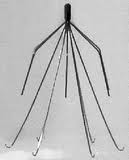September 5, 2012 — In 2010, the FDA published a Safety Communication after they received more than 900 adverse event reports of patients who were injured by IVC filter side effects.
IVC filters are implanted in people at risk of a pulmonary embolism who cannot take blood-thinning medications. Unfortunately, the filter itself poses serious risks, especially temporary filters that are not removed when they are no longer needed.
As of August 2010, the FDA has received a total of 921 adverse event reports, including the following:
- 328 reports of device migration
- 146 reports of device embolization (detachment of device components)
- 70 reports of perforation of the inferior vena cava (the blood vessel where the filter is implanted)
- 56 reports of filter fracture
Many of these events occurred in patients who were implanted with a removable IVC filter, but doctors never actually removed the filter after the patient no longer needed protection from a pulmonary embolism.
According to the FDA,
“The FDA is concerned that these retrievable IVC filters, intended for short-term placement, are not always removed once a patient’s risk for PE subsides. Known long term risks associated with IVC filters include but are not limited to lower limb deep vein thrombosis (DVT), filter fracture, filter migration, filter embolization and IVC perforation.”
The FDA specifically advised doctors to carefully weigh the risk-benefit profile of the IVC filter before implanting it. Furthermore, patients with removable IVC filters should have the device removed as soon as feasible and clinically indicated.
C.R. Bard, the medical device company that manufactures the Bard Recovery IVC filter, re-designed the device and called it the G2 IVC filter. The G2 was marketed as having “enhanced fracture resistance” and “migration resistance,” but a study published in the Archives of Internal Medicine in 2010 found that 12% of G2 filters fractured within 5 years.
When an IVC filter is left in place longer than necessary, there is a risk that the spider-like legs (or “struts”) of the device can fracture. If this occurs, pieces of the device can travel to the heart or lungs and can cause severe internal injury. A perforated heart muscle may leak fluid into the sac around the heart.
Do I have an IVC Filter Lawsuit?
The Schmidt Firm, PLLC is evaluating IVC filter cases in all 50 states, regardless of whether you were injured or not. If you or someone you know received an IVC filter implant, please contact our lawyers immediately for a free case consultation. You may be entitled to compensation by filing a lawsuit.
Please use the form below to contact our Defective Medical Device Litigation Group or call toll free 24 hours a day at (866) 920-0753.
Attention Lawyers: We consider a referral from another law firm to be one of the greatest compliments. If your firm is interested in referring us a case or for us to send you a list of previous award judgments and/or average referral fees, please visit the Lawyer Referral section of our website.


 The Schmidt Firm, PLLC has been recognized as one of the nation’s leading plaintiffs' law firms and handles cases in all 50 states. We are very proud of our legal achievements, but equally self-respecting of our firm's reputation for providing personal attention to each and every client we represent.
The Schmidt Firm, PLLC has been recognized as one of the nation’s leading plaintiffs' law firms and handles cases in all 50 states. We are very proud of our legal achievements, but equally self-respecting of our firm's reputation for providing personal attention to each and every client we represent.

